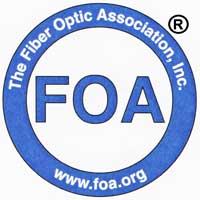

April 2024
|
Search the FOA website
FOA Home Page
Contact
Us
|
Sign
up for the FOA eMail Newsletter
Privacy Policy
Links To Sections
News
Technical
Worth
Reading Q&A
Training/FiberU
Resoures
Safety
About
|
INDEX
Newsletter Sections Click
on any link to jump to that section
Features
April 1 - A Day For Jokes
AI To Write International Standards
Drone Guided By Fiber Optics
Technology Burnout
AI Generated Spam
Data Centers, AI, Crypto Overload Power Grid
FOA Support For STEM Education
All FOA Certification Credentials Are Online
Links To Resources On Broadband
News
FTTH Award Goes To FOA Instructor
Ian Gordon Fudge
CFOTs Are Everywhere - Even Mt. Fuji
Getting Trained & Certified In India
New FTTH Textbook in Serbian Language
Broadband Communities Summit
Technical
Introduction To Fiber Project Softwaare
Fiber To The Shore
Best Example Of Worst Install?
Spike Markers For Underground Cables
NECA/FOA Standard Withdrawn
Information From A Cable Scrap
Managing Projects - Gantt Charts
FOA Color Code Guides
FOA Online Loss Budget Calculator
Worth
Reading Lots of interesting
articles
Q&A
Interesting questions from our readers
Training/FiberU
Types Of Work Done By Fiber Techs
FOA-Approved School News
Fiber U
MiniCourses
Resources
New FOA Technical Resources
Safety
About the FOA
FOA Certified Techs:
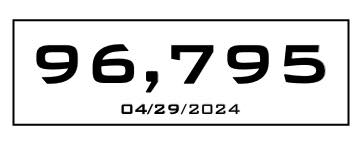
2024 At FOA - Heading For 100,000
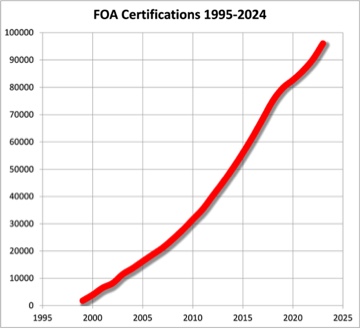
Time
To Renew Your FOA Certifications?
Jobs
- See FOA Jobs
Web Page and FOA on

- The FOA Jobs
- Using your FOA
Training/Certification to Find the Right Job
in Fiber Optics
Where
Are The Jobs In Fiber Optics?
Join The FOA eMail Newsletter
List
Want
to be notified when the FOA Newsletter is updated? Sign
up for the FOA eMail Newsletter.
Trademarks:
The FOA logo and name, CFOT® (Certified Fiber Optic Technician) and
Fiber U® (the FOA online learning site) are
registered trademarks of the FOA.

Want to know more about fiber optics?
Looking for specific information? Here's the largest
technical reference on the web: The
FOA Online Fiber Optic Reference Guide.
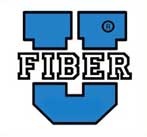
Free online self-study programs
on many fiber optics and cabling topics are
available at Fiber U,
FOA's online web-based training website.
FOA
Reference Books
Available Printed or eBooks
The fiber book is
available in Spanish and French
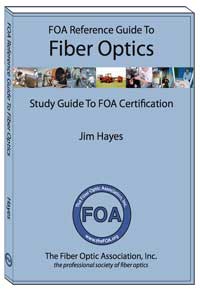 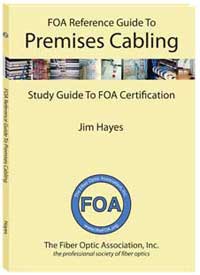 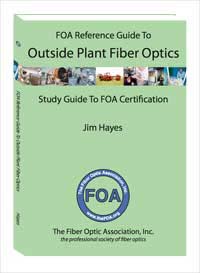
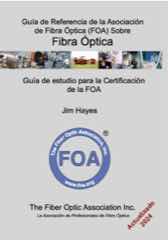
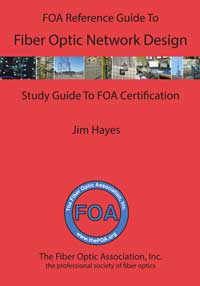 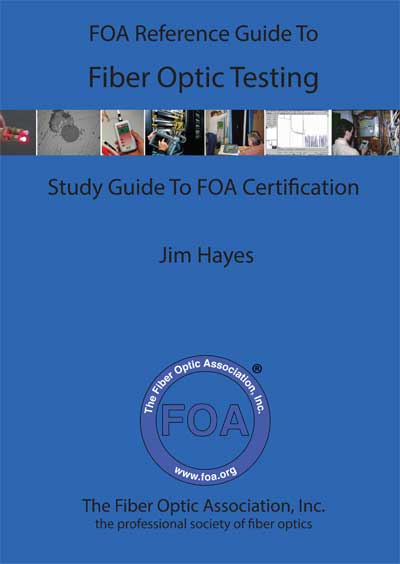 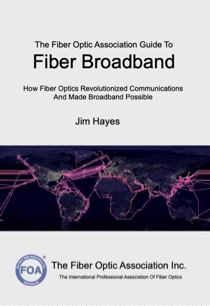
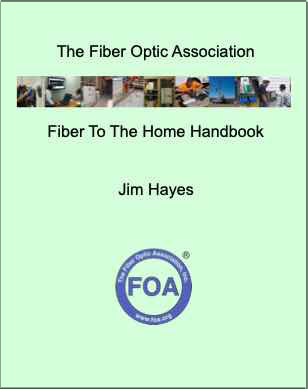 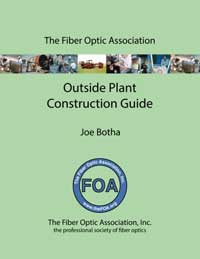 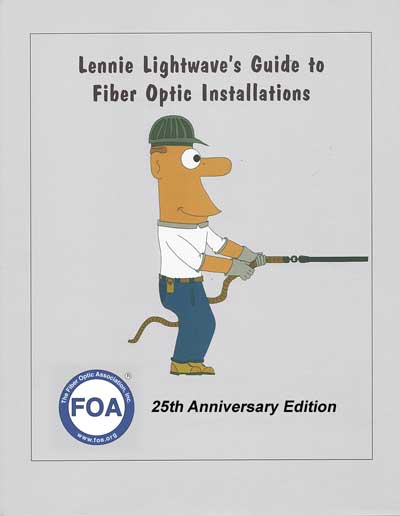
Click on any of
the books to learn more.
- Fiber
Optic Safety Poster to download and
print
FOA Videos on 
FOA
is a member of:
 


The FOA Newsletter is
edited by Jim Hayes - send your stories, leads,
ideas, comments to <jim @ foa.org>

Search the FOA Website With
DuckDuckGo
- The Archives: Past
Issues.
- Use these links to
read past issues or use FOA's
Custom Search to look for specific
topics on our website.
- 1/24, 2/24, 3/24, 4/24.
1/23, 2/23, 3/23, 4/23, 5/23, 6/23, 7/23, 8/23, 9/23, 10/23, 11/23, 12/23
1/22, 2/22, 3/22, 4/22, 5/22, 6/22, 7/22, 8/22, 9/22, 10/22, 11/22, 12/22
1/21, 2/21. 3/21, 4/21, 5/21, 6/21, 7/21, 8/21, 9/21, 10/21,
11-12/21,
1/20,
2/20,
3/20.
4/20,
5/20,
6/20,
7/20,
8/20,
9/20,
10/20,
11/20,
12/20,
1/19,
2/19,
3/19,
4/19, 5/19, 6/19, 7/19, 8/19, 9/19,
10/19,
11/19,
12/19
1/18,
2/18,
3/18, 4/18,
5/18, 6/18, 7/18, 8/18, 9/18, 10/18,
12/18.
1/17, 2/17, 3/17, 4/17, 5/17, 6/17,
7/17,
8/17,
9/17,
10/17, 11/17,
12/17
1/16, 2/16, 3/16,
4/16,
5/16,
6/16,
7-8/16,
9/16,
10/16,
11/16,
12/16
1/15,
2/15,
3/15,
4/15,
5/15,
6/15,
7/15,
8/15,
9/15 ,
10/15,
11/15
, 12/15
1/14,
2/14,
3/14,
4/14,
5/14,
6/14,
7/14,
8/14,
9/14,
10/14,
11/14,
12/14
1/13,
2/13,
3/13,
4/13,
5/13, 6/13,
7/13,
8/13,
9/13,
10/13,
11/13,
12/13
1/12
, 2/12,
3/12,
4/12,
6/12,
7/12,
8/12,
9/12,
10/12,
11/12,
12/12
1/11 ,
2/11,
3/11,
4/11,
6/11,
7/11,
8/11,
9/11, 10/11,
11/11,
12/11,
1/10 ,
2/10,
3/10,
4/10,
05/10,
07/10,
08/10,
09/10,
10/10,
11/10
1/09 ,
2/09,
3/09,
04/09,
05/09,
07/09,
08/09,
09/09,
10/09, 11/09,
12/09
1/08 , 2/08, 3/08, 4/08, 5/08, 6/08, 7/08, 8/08, 09/08, 10/08, 11/08, 12/08
12/07 , 11/07, 10/07, 09/07, 08/07, 07/07, 06/07, 05/07, 04/07, 03/07, 2/07, 1/07
12/06 , 11/06, 10/06, 09/06, 8/06, 7/06, 6/06, 5/06, 4/06, 3/06, 2/06, 1/06,
12/05 ,11/05, 10/05, 09/05, 08/05, 07/05, 6/05, 5/05, 4/05, 2/05, 01/05,
12/04 , 10/04, 9/04, 8/04, 7/04, 6/04, 5/04, 4/04, 3/04, 1/04,
12/03 , 11/03 10/03 9/03, 8/03, 7/03, 6/03, 3/03, 10/02 , 8/02, 5/02
Current Issue of FOA
Newsletter
Time To Renew Your
FOA Certifications?
To
keep your FOA certifications active, you need to
renew them when they expire every 3 years. Now we have a new more
convenient way to renew - an online store at Paypal
- where you can quickly and conveniently use your
PayPal account or your credit card to renew your
certifications.
- Renew
online with a credit card or PayPal
-
Join FOA On
Social Media

FOA
has 3 LinkedIn Groups
FOA
- official page on LinkedIn - covers FOA, technology and jobs in the fiber optic
marketplace
FOA
Fiber Optic Training - open to all, covers
fiber optic technology and training topics
Grupo
de La Asociación de Fibra Óptica FOA (Español)
|
April 1st Is A Day For Jokes -
But Can You Tell Which Are Jokes And Which Are Real?
It is traditional to use April 1st - April Fool's day - as a day to
create jokes, the more outrageous but believable the better. One of the
best for the fiber optic community was Google TISP
- the first Google fiber to the home offering, where they mail you a
package with a fiber optic cable that you install yourself by flushing
it down your toilet! Amazing how many people believed that one was real!

So this month in the FOA Newsletter we're going to run some stories that
might be true, might not. Read them and guess. We'll provide a link at
the end for you to check your guess.
AI To Write International Standards
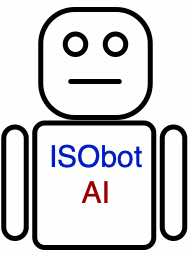
An Artificial Intelligence (AI) called ISObot that
is capable of writing new industry standards has been introduced.
Created by a consortium of standards groups, ISObot is designed to write
industry standards on any subject. ISObot was trained first on the
thousands of standards already in existence so it would first learn the
structure, language of standards and the format. Then it was trained
on relevant articles on the Internet and applications literature of
companies involved with the topics of the standards being created and which would be expected to write the relevant standards.
A spokesperson for the creators said, "ISObot can
write standards as well as any of the current standards committees. Even
better it means no more debating in long committee meetings or backroom
maneuvering to get standards for any topic. It also reduces the time to
write a standard. ISObot can write a standard in a few minutes that
might take a committee years to create, given the need for agreement
among the committee members. The standards members who have seen the
results of ISObot think the resulting standards are as good as the ones
they create, but they are complaining that there is no longer any excuse
to travel to exotic locations to have meetings."
ISObot's first fiber optic standard is the
standard for OSP aerial cable plants. The development of the standard
had a steep learning curve; one iteration confused pole location and
service loops, leading to occasional curlicues in the layout of cables
and service loops partially buried in the ground. Confusion over the
word fiber also resulted in including a specification for the tension on
yarn strung between poles. But all the bugs have now been worked out
and the final standard will be released on April 1, 2024.
Soon ISObot will produce international standards that
cover any and everything, from fiber optics to electrical vehicles to
AI. Yes ISObot will write standards that cover itself.
Drone Guided By Fiber Optics
The Ukrainian Army recently captured a Russian drone which communicates
via a fiber-optic link instead of radio, making it jam-proof.
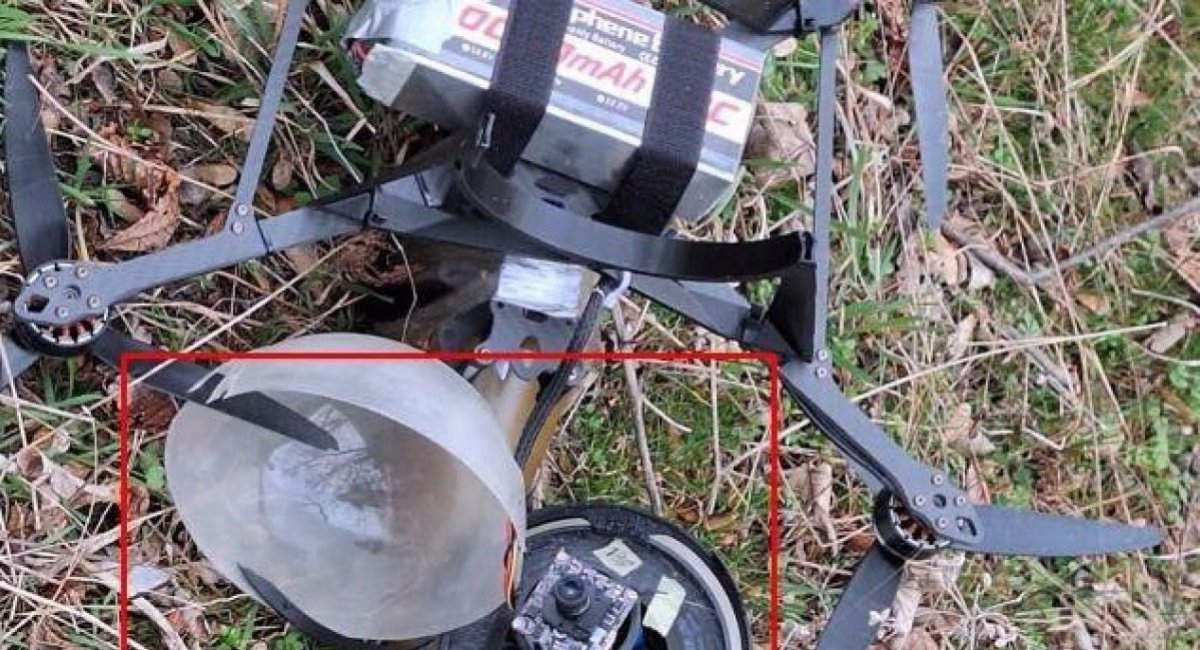
Highlighted in red is the plastic egg and spool of fiber it holds.
Ukrainian military reported this strange new type of Russian drone, in
addition to the usual warhead, was carrying a hollow plastic egg
containing optical fiber that spooled out behind the drone and provided a
communications link to its operator.
Kalashnikov subsidiary ZALA boasted that their new ‘Product 55’
quadcopter was proof against all forms of radio jamming. The Russian
attack drone uses a very different and quite surprising technology to
overcome radio interference and jamming: it has no radio but
communicates with the operator via a fiber-optic cable spooled out as it
flies.
This was the concept behind the U.S. Fiber Optic Guided Missile (FOG-M)
program from the 1980s. Being able to see from the missile’s point of
view meant the operator could engage targets beyond their line of sight;
a light vehicle carrying racks of EFOG-Ms would be able to destroy
enemy armor a long range.
Is this fiber optic guided drone real? Find out here.
Technology Burnout

The technology industry felt like an island of bubbly optimism about
its future and ours. Faith in the magic of technology was painfully
earnest — and refreshing.
But we’ve changed and the technology industry has changed.
There has been a slow metamorphosis of America’s technology industry
from David to Goliath. Along with it, the zesty confidence of the early
2010s has curdled. Our bubbly faith in technology is now tempered by
mistrust and resentments.
That shift was spotlighted this week by a landmark European law trying
to wrest power from Big Tech, fresh allegations that Meta repeatedly
failed to help people whose social media accounts were hijacked by
scammers and a fight between rich tech executives over artificial
intelligence that’s more about their self interest than our needs.
Many of us are grateful for technology and hope it can help us solve
thorny problems. We also fear that many technologies and tech companies
are making us and the world worse. We’ve become more worried than
hopeful about inventions like AI.
Our feelings about technology may not be facts. But they do influence
how we view technology and the world around us. And there’s no turning
back to the fresh optimism I felt years ago.
AI Generated Spam
The following AI written email was received by FOA President Jim Hayes:
From: Chip Minto
Subject: Let's consider focused insights: B Generous
Hi Jim,
Your dedication to promoting fiber optics through education and
certification at FOA is truly commendable. As Chip, Director of Lending
and Partnerships at B Generous, I've seen organizations like OFS and
Corning thrive by staying ahead with our market trends.
FOA's impact in the industry, particularly your recent initiatives, have
caught our attention. The resilience highlighted in recent reviews
showcases your commitment to excellence and innovation.
In our quest for futuristic solutions, we invite you to an exclusive
strategy session tailored for FOA. Dive into a world of possibilities
with us in a 20-30 minute chat using the FOA invitation deck. Join the
ranks of the 221+ in this unique journey towards success.
Wishing you a week filled with inspiration and growth.
______________________
Chip Minto
Director of Lending and Partnerships
B Generous
United States.
Kalendar.AI sales agents have written & sent this email on behalf of
B Generous as they've requested us to send this to you. If you no
longer wish to receive these emails, simply unsubscribe to never hear
from them again, respond to them here, or let us know if you find any
errors in the AI content generation with your kind, big heart. We only
process publicly available information limited to Name (first and last)
and company information (location, the domain, website metadata such as
technology, and any relevant keywords). We DO NOT track or store any of
your personal information. Please visit our TLDR privacy if you want to
understand more about how we process data. Our mission is to help
businesses create opportunities, particularly helping small businesses
to thrive with the help of AI-driven stories. We strictly comply with
CCPA, GDPR, and CAN-SPAM laws. You can opt-out of our data processing
anytime. We are Kalendar Inc, located at 450 Lexington Ave. New York, NY
10017.
Data Centers, AI, Crypto To Cause Power Grid Overload
Amid explosive demand, America is running out of power - AI and the boom
in clean-tech manufacturing are pushing America’s power grid to the
brink. Utilities can’t keep up.

Vast swaths of the United States are at risk of running short of
power as electricity-hungry data centers and clean-technology factories
proliferate around the country, leaving utilities and regulators
grasping for credible plans to expand the nation’s creaking power grid.
Data center growth is being driven by the increase in streaming video,
but in addition the massive computing power needed for AI and Bitcoin
mining.
The soaring demand is touching off a scramble to try to squeeze more
juice out of an aging power grid while pushing commercial customers to
go to extraordinary lengths to lock down energy sources, such as
building their own power plants.
“When you look at the numbers, it is staggering,” said Jason Shaw,
chairman of the Georgia Public Service Commission, which regulates
electricity. “It makes you scratch your head and wonder how we ended up
in this situation. How were the projections that far off? This has
created a challenge like we have never seen before.”
A major factor behind the skyrocketing demand is the rapid innovation in
artificial intelligence, which is driving the construction of large
warehouses of computing infrastructure that require exponentially more
power than traditional data centers. AI is also part of a huge scale-up
of cloud computing. Tech firms like Amazon, Apple, Google, Meta and
Microsoft are scouring the nation for sites for new data centers, and
many lesser-known firms are also on the hunt.
The proliferation of crypto-mining, in which currencies like bitcoin are
transacted and minted, is also driving data center growth. It is all
putting new pressures on an overtaxed grid — the network of transmission
lines and power stations that move electricity around the country.
Bottlenecks are mounting, leaving both new generators of energy,
particularly clean energy, and large consumers facing growing wait times
for hookups.
Are the future problems of the power grid real or a joke? Find out here.
These stories
might be true, might not. Read them and guess. Find out here.
The rest of the FOA April Newsletter is guaranteed to be legitimate news!
FOA Programs Support STEM Education
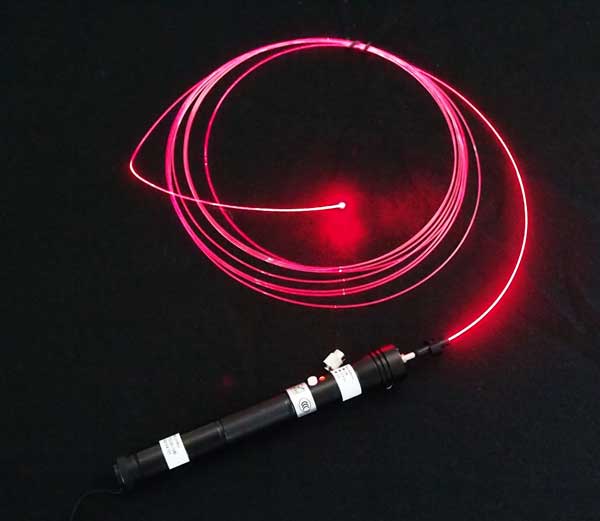 Classroom
Resources For STEM Teachers In K-12 And Technical Schools Classroom
Resources For STEM Teachers In K-12 And Technical Schools
Teachers in all grades can introduce their students to fiber
optic technology with some simple demonstrations. FOA has
created a page for STEM or STEAM (science, technology,
engineering, arts
and math) teachers with materials appropriate to their
classes. Fiber
Optic Resources For STEM Teachers.
FOA
also has a YouTube
Video on "Careers
in Fiber Optics" and a "Careers
In Fiber Optics" Website.
See below.
All FOA
Certification Credentials Are Now Online
All FOA Certified Fiber Optic Technicians now have their certification
credentials online.
if your FOA certification has not expired you should have been notified you have an
online credential. If you did not get notification it may be because
FOA did not have a valid email for you. Contact FOA to inquire about your certification credential.
Whats New?
The Fiber Optic Association Guide To Fiber Broadband Is A Hit With Broadband Planners Paperback ($12.95) and Kindle ($9.95) versions available from Amazon or most booksellers. Kindle version is in color!
New In The FOA Guide - Introduction To Broadband and Guidelines For Fiber Optic Project Planners
Cross Reference Guide to Textbooks, Online Guide and Fiber U FOA Videos Guide.
FOA has a web page with resources on fiber broadband and the IIJA/BEAD funding programs.
FOA Newsletter
Sections
News
Technical
Worth
Reading Q&A
Training/FiberU
Resoures
Safety About
|
|
News
Lots more news
in Worth Reading below
|
Quote of the month: "In today's digital
world, access to technology and the Internet enables boundless
opportunities. Now more than ever, women and girls are seizing
these opportunities to smash barriers and soar to new heights."
Maci Morin and Michell Morton, Office of Internet Connectivity and Growth, NTIA, celebrating Internatinal Women's Day.
FOA Instructor And Technical Advisor Ian Gordon Fudge of FiberDK
Chosen For FTTH Individual Award In Europe
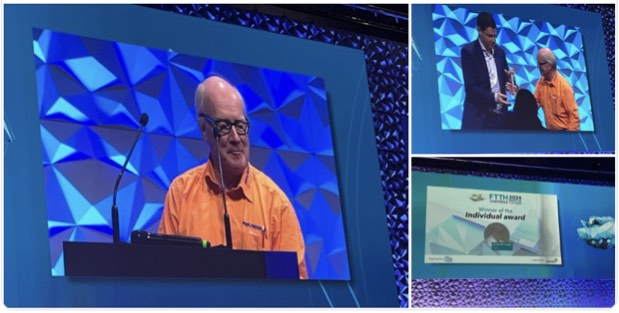
Ian Gordon Fudge of FiberDK awarded FTTH Individual Award
The FTTH Council Europe recently announced the winners of the
prestigious FTTH Awards and brand-new FTTH Innovation Awards, presented
for the first time at the FTTH Conference 2024 in Berlin. Three awards
in total were presented by Raf Meersman – President of the FTTH Council
Europe, during the plenary session of the FTTH Conference on March 20th,
rewarding the outstanding contributions to the growth of the industry
and the acceleration of FTTH deployment in Europe:
• Prysmian is the winner of the Champion of Diversity Award, for their
unwavering commitment to addressing diversity issues within the fibre
industry
• Ian Gordon Fudge, Owner of Fiberdl is the winner of the FTTH
Individual Award, for his remarkable efforts in championing the
advancement of FTTH technology in Europe
• Open Fiber is the winner of the FTTH Operator Award, for its
exceptional contribution to the development and widespread
implementation of FTTH
"The FTTH Awards celebrate innovation, perseverance, and excellence in
fibre optic. As we honor the pioneers shaping our digital future, let us
reaffirm our commitment to building a connected Europe where
opportunities abound and communities thrive thanks to full-fibre
connectivity," commented Raf Meersman, President of the FTTH Council
Europe."
FTTH Council Europe.
FOA CFOTs Are Everywhere
Climbing Mt. Fuji In Japan
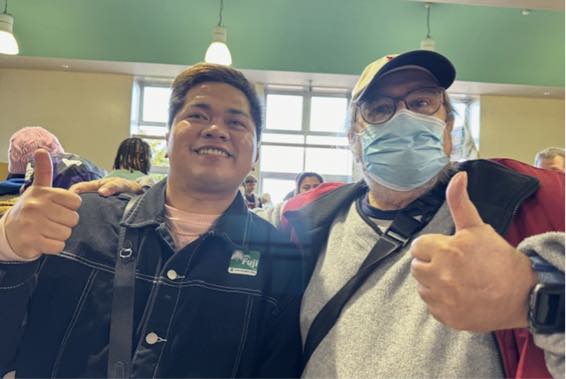
Recently, Tom Collins, a FOA Board Member and Donna Collins, a FOA
instructor, took a fantastic vacation in Japan. On a tour to Mt. Fuji
they met an interesting young man. They struck up a lively conversation.
We found out he had been a Network Engineer in the Philippines and
recently left a job in Japan as a teacher. Currently, he is a travel
blogger in Japan and also provides some tours. During our conversation, I
mentioned to him I belonged to an incredible organization that proves
Fiber Optic instructional materials. He informed us he received the
Certified Fiber Optic Technician certification while in the Philippines.
He showed us his credentials and our jaws dropped! We let him know Tom
was on the FOA Board.
We continued to talk on and off throughout the tour about his career
goals. He told us that Covid-19 put things on hold for him. His
certification recently expired and wanted to know if we could do
anything for him. We offered him a scholarship to complete the Certified
Finer Optic Specialist Design certification and would be more than glad
to help him out.
We were truly blessed to meet him as he helped us out at the train
stations for the Bullet Train ride which concluded our Mt. Fuji tour.
The last stop was at the Tokyo Train Station. We were like deer caught
in the headlights! Luckily, he guided us all the way to the taxi stand.
Getting Trained And Certified In Hyderabad, India

FTTH
AND SMART TECHNOLOGIES in Hyderabad, India recently conducted a class
for CFOT. Ahmed Askar Jaffer Ali completed the class for CFOT
certification. Shaik Kareem, the instructor (right) , presents him with
his CFOT Class Certificate.
New Technical Book On FTTx In Serbian
Vladimir Grozdanovic is a graduate electrical
engineer for
telecommunications with more than 10 years of experience in access
networks (HFC and FTTH) in large cable operators in Serbia (SBB and
Jotel). He has been writing technical articles for the FOA Newsletter
based on his personal experiences. Now he has applied his writing
talents to a textbook on FTTx in his native language, Serbian.
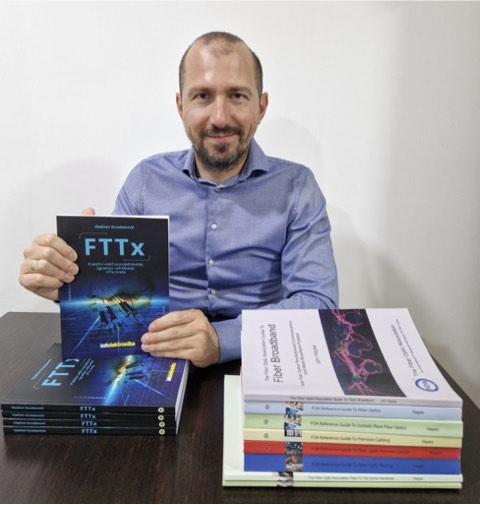
Below is his description of the book (in English!)
The
rapid expansion of the Internet, followed by the introduction of a
greater number of various services, has led to the increased user
demands, which resulted in continuous development of access networks.
Over the past decade, the demand for high bandwidth, high bit
rates in both directions, low latency, and more reliable services have
significantly pushed out old traditional telephone and cable networks
and contributed to the development and widespread popularity of optical
fixed access networks - particularly FTTH (Fiber To The Home).
This book will introduce you to modern FTTx optical networks
and provide a range of practical tips on designing, building, and
maintaining them.
The first part of the book covers the basics of optical
communication systems, types and structure of optical fibres and cables,
followed by fibre and cable labelling conventions, attenuation and
dispersion calculations, and finally measurements performed on optical
networks. The second part is dedicated to FTTx optical networks -
various FTTx scenarios, principles of design and construction, FTTx
testing, and troubleshooting typical problems on FTTx networks.
The book can be ordered through the publisher Infoelektronika website https://www.infoelektronika.net/. Delivery is available to all countries worldwide via standard mail or international express mail EMS.
Broadband Communities Summit 2024
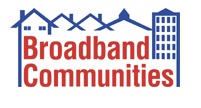
Broadband Communities Summit 2024 is an event for those
interested in delivering connectivity for communities in the US. This
year’s event will bring together 1500 senior-level attendees from the US
broadband sector, municipalities, property owners and government. May
6th – 8th 2024 at The Woodlands Waterway Marriott Hotel & Convention
Center, Texas
Learn more about the Broadband Communities Summit
NEW: Broadband Communities and Total Telecom will also hold Broadband Communities Summit West which will take place at the San Diego Convention Center in San Diego, CA on October 30-31 2024.
Quote Of The Month:
(several months ago actually, but this is worth repeating)
Speaking at the Goldman Sachs Communacopia +
Technology Conference, AT&T’s CEO John Stankey said, “There’s a
fallacy to say there’s fixed networks and wireless networks. There are
only fiber networks with different access technologies on the end of
them. That’s where this is all going.”
Fierce Wireless
|
Technical
Fiber optic
technology, standards, equipment, installation,
etc.
The FOA
Update Page covers the new technology
and applications we covered in this newsletter
recently. Now you can review all that new tech at
once.

Cross Reference To FOA Technical Reference Materials
The FOA has almost 1,000 pages of technical information on the FOA Guide,
100+ videos and two dozen online courses at Fiber U, all this can make
it difficult to find the right information.
Cross Reference To FOA Tech Materials
To help this, we have created a cross reference guide to the textbooks,
Online Guide and Fiber U courses, all the FOA technical information.
Besides the textbooks, online Guide and Fiber U, each section of the
Guide also includes links to the 100+ FOA videos available.
Cross Reference Guide to Textbooks, Online Guide and Fiber U
FOA Videos
We have also rearranged the 100+ FOA videos in similar categories on the
Contents Page of the Online Guide, making the videos, especially the
lectures, much it much easier to find a video on a particular
topic.
FOA Videos Guide.

Want to know more about fiber optics? Study
for FOA certifications? Free
Self-Study Programs are on Fiber
U®
|
 OptConn
is a value-add re-seller of optical connectivity products, services and
solutions. With over 30 years of experience in the fiber optics
industry we are here to serve your requirements from fiber optic
training with FOA certification to products, materials and supplies. OptConn
is a value-add re-seller of optical connectivity products, services and
solutions. With over 30 years of experience in the fiber optics
industry we are here to serve your requirements from fiber optic
training with FOA certification to products, materials and supplies.
We have partnerships with industry leading
manufacturers to support your installation, splicing and testing needs.
Our goal is to guide, support and recognized our client’s requirements.
Learn more about OptConn
|
Introduction to GIS and Fiber Management Systems?
There is a rising demand for efficient fiber optic
network solutions, and Jerry Morla has written an article offers an
overview of digital management tools, including emerging options and
traditional platforms. These tools are essential for planning,
implementing, and maintaining networks, ensuring operational efficiency
and customer satisfaction in the telecommunications and fiber optics
sectors. If you need more information in this area, check out the
following article:
While Geographic Information Systems (GIS), Fiber Network Management
Systems (FNMS), and Operational Support Systems/Business Support Systems
(OSS/BSS) each serve distinct purposes, their integrated functionality
enables efficient, reliable, and customer-focused fiber optic network
deployment and operations. Understanding their roles, differences, and
synergies provides a comprehensive view of the technological
orchestration behind the scenes of our interconnected world.
Read the article here in the FOA Guide.
Fiber To The Shore - Not All Submarine Cables Are Transoceanic

There are only a handful of companies that design, build and install
transoceanic cables but they seem to get most of the attention. But
smaller companies like Baylink Networks of Port Coquitlam, British
Columbia, Canada also provide similar services but on a smaller scale.
Here is how they describe their work:
Baylinks builds full turnkey undersea fiber networks connecting
communities. Baylink Networks’ undersea fiber optic cable system is
optimized for rugged undersea environments with minimal impact.
Building land-based fiber optic networks are extremely costly in
comparison to building networks undersea. Unfortunately, traditional
undersea cable methods are unable to offer these economical solutions.
Baylink Networks introduced practical innovations in the undersea
telecommunication space. The compact patented cable system is
rapidly deployed using smaller vessels. Baylink Networks’ patented
cable designs offer unmatched performance in the undersea environment.
Baylink Networks’ product line and methodology are optimized for
building economical regional undersea links connecting coastal urban
centers, remote communities and offshore industry and research.
Learn more about Baylink Networks.
Another Candidate For Best Example Of Worst Install
Woodstock GA, corner of Jamerson Rd and Trickum Rd, NE corner
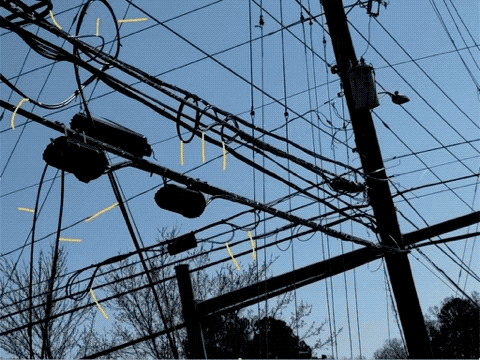
Contributed by Eric Pearson of Pearson Technologies. Eric is FOA School #101 - the second FOA Approved School.
Tempo Spike Markers For Underground Cables
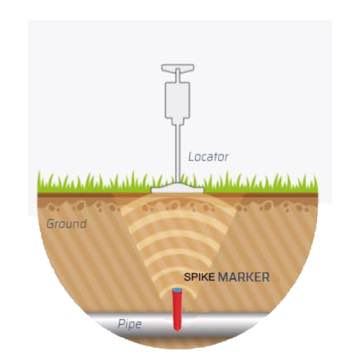
Tempo's new Spike Markers simplify marking items up
to 1 meter (3.3 ft) deep in soil. Their compact design make them ideal
for cable TV drops, fiber, and power/gas lines, and they excel in narrow
ducts. With durable polyethylene construction, they ensure longevity,
while remaining compatible with all locators. The Spike Marker contains
no batteries or active components, and is built using high reliability,
long life materials ensuring these markers last as long as your buried
plant. markers are available in colors to identify the type of
underground utility it marks.
More about Tempo Spike Markers.
NECA/FOA 301 fiber optic installation standard
withdrawn
 The NECA/FOA 301 fiber optic installation standard has been
withdrawn. It's almost a quarter century old and a decade since the
last update. It has been decided the standard needs to be replaced with a
more modern document covering current technology and written in a
format that allows easier updating. The NECA/FOA 301 fiber optic installation standard has been
withdrawn. It's almost a quarter century old and a decade since the
last update. It has been decided the standard needs to be replaced with a
more modern document covering current technology and written in a
format that allows easier updating.
In the meantime, there is lots of useful information in the standard and you can still download a free copy from FOA.
Download your free copy of ANSI/NECA/FOA-301
here (PDF)
FTTH Technical Papers
FOA contributor Vladimir Grozdanovic has created
another technical paper on testing FTTH PON based on his field experiences.
Testing The FTTH PON Network (new)
Troubleshooting PON Installations.
Installation of FTTH Active Equipment in the FOA Guide.
Optical Splitters in the FOA Guide.
Examples of poor installation of FTTH in the aerial outside plant and in the customer premises.
Learning Important Information From A Found Cable Scrap
While walking down the street near the FOA office, we found this cable
laying in the gutter. What a find! A short length of Corning Rocket
Ribbon 864 fiber cable left over from an installation by a contractor.

We brought the cable back to our office with the intention of opening it
up and creating a video about the construction of this modern high
fiber count cable, but something got our attention first. The cable had a
very
long line of printing on it with lots of interesting and useful
information. So before we started deconstructing it, we decided to
photograph the printed information and interpret it. That turned out to
be an important part of the information we learned from the cable. Then,
as you will see below, we dissected the cable and learned even more.
Red more about what this cable marking tells you and what the cable looks like when you open it up to prepare for splicing.
Managing Fiber Optic Projects - The Gantt Chart
(With An Excel File To Make Your Own)
The most common way to track projects is the Gantt Chart, a
chart of activities that tracks the progress of projects along a
timeline. each activity is represented by a bar and the position and
length of the bar represents the starting date and duration of the
activity. This allows you to see what activities are needed for the
project, when the activities start and end so it can be used to track
the progress of the project visually. Here is what a Gantt Chart for a
fiber project might look like:
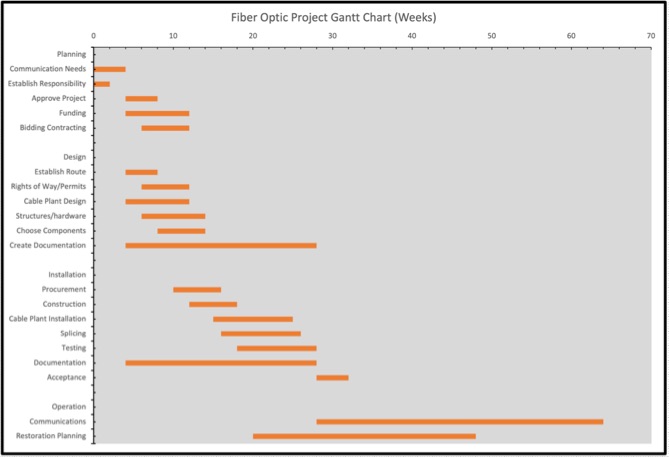 You might remember an article in the FOA Newsletter in April 2022 or the FOA Guide page on Project Management about the timing of a fiber optic project where we showed the progression of steps in a project like this: You might remember an article in the FOA Newsletter in April 2022 or the FOA Guide page on Project Management about the timing of a fiber optic project where we showed the progression of steps in a project like this:
The Gantt Chart is simply this list converted to a Gantt Chart
using a Microsoft Excel spreadsheet. You can download a copy of the FOA Gantt Chart spreadsheet (xlsx file - 16kB)
and use it to create your own Gantt Chart for any project. All you have
to do is to input your own data and change the activity names as
necessary. You can also follow the directions from Microsoft to create your own version.
Help On Color Codes (Including Copper Cabling And Fiber Optics)
The FOA has created a print-your-own pocket guide to fiber
optic color codes. It has
color codes for fibers and buffer tubes, connectors and premises cables
inside and on the back, QR codes to take you directly to the FOA Guide
and Fiber U. The FOA
Guide page on Fiber Optic Color Codes is one of the most read pages on the FOA
website and the Fiber Optic Color Codes minicourse on Fiber U very popular also.
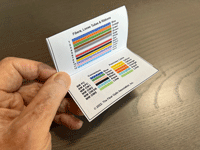 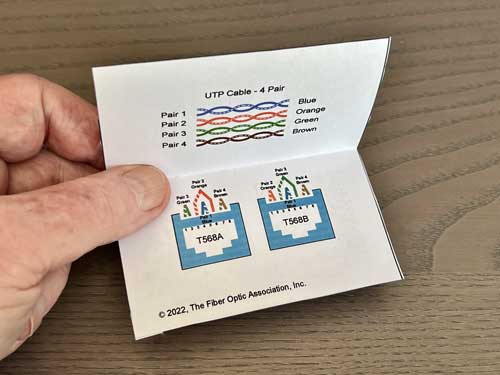 
Here are the links to download your own FOA Guides to Fiber Optic Color Codes
FOA Guide to Fiber Optic Color Codes (print your own version) PDF
FOA Guide to Fiber Optic Color Codes (electronic version for your smartphone, tablet or PC) PDF
And Color Codes For UTP Cabling
FOA Guide to UTP Cabling Color Codes (print your own version) PDF
FOA Guide to UTP Copper Cabling Color Codes (electronic version) PDF
Warning For Techs Doing OSP Restoration
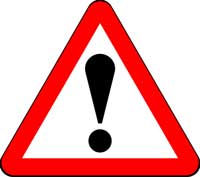 FOA received an inquiry about whether techs
working on restoring OSP links should be concerned about eye safety if
the link used fiber amplifiers. To answer this question, we had to do some research on fiber amplifiers.
The short answer is YES, you should be concerned. The long answer is
more technical and includes details that every OSP tech needs to know. FOA received an inquiry about whether techs
working on restoring OSP links should be concerned about eye safety if
the link used fiber amplifiers. To answer this question, we had to do some research on fiber amplifiers.
The short answer is YES, you should be concerned. The long answer is
more technical and includes details that every OSP tech needs to know.
See "Fiber Amps And Restoration" in the FOA Newsletter Archives..
Try The FOA's Online
Loss Budget Calculator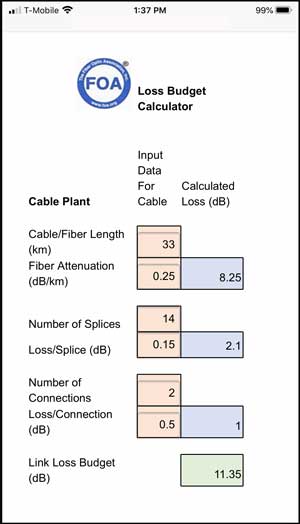
FOA
has written many articles about loss budgets,
something everyone involved in fiber optics needs to
know and needs to know how to calculate. We've
created a online Loss Budget Calculator that does
the work for you. Just input your cable plant data
and it calculates the loss budget. It works on any
device, especially smartphones and tablets for field
use and even allows printing the results.
Bookmark
this page (especially on your smartphone): FOA Loss Budget Calculator
Online
|
Worth Reading
Each month we read
hundreds of newsletters and online articles. These
are the ones we think you will find "worth
reading."
FOA has a web page with resources on fiber broadband networks and the IIJA/BEAD funding programs.
Cross Reference Guide to FOA Textbooks, Online Guide and Fiber U
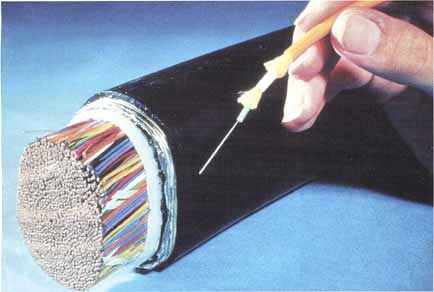 AT&T PR photo from the mid 1970s AT&T PR photo from the mid 1970s
The FOA's History
Stories From The Past FOA Newsletters
Recent articles from The FOA Newsletter
Fake OTDR Traces Submitted For Testing Documentation January 2023 Tech
Using OTDRs To Test Transoceanic Cables And PONs February 2023
POF - the Other Fiber March 2023
What Do Employers Expect From A Fiber Optic Tech? April 2023
Are Standards Ignoring The OSP? May 2023
FOA Has Proven Results In Fiber Optic Workforce Development June 2023
BEAD Funding For States Announced And Analyzed July 2023
Wisdom From The Street (Analyzing the printing on a fiber optic cable) July 2023
Focus On Disasters August 2023
FOA's Role In Education and Work Done By Fiber Techs September 2023
The Workforce: New US DoL Bureau of Labor Statistics Telecom Tech Category October 2023
How Many Telecom Techs Do We Need and How Big Is The Fiber Optic Market November 2023
Guidelines For Fiber Optic Project Planners December 2023
2023 Year In Review. Kentucky Shows The Value Of Fiber January 2024.
What is Broadband? History of the Cable Modem February 2024
It's Just Economics. Things you need to know. March 2024.
|
Worth Reading (And
Watching):
March 2024
Can Our Industry Develop Fiber Talent? ISE Magazine. Learn how states, schools and training organizations must work together to develop fiber field talent.
Landlines are dying out. But to some, they’re a lifeline. Washington Post Providers want to scale back landline service, but people with poor cell reception still rely on it for emergencies.
What’s Ahead for Fiber-Optic Markets and Technologies? CI&M Magazine Video. Interview
with AFL’s vice president of market strategy and innovation Seán Adam
talking about 2024 and the future. Hint - broadband is not the biggest
driver of the fiber optic market!
Can Xerox’s PARC, a Silicon Valley Icon, Find New Life with SRI? NYTimes. Xerox's
Palo ALto Research Lab was the innovative lab that created laser
printers, the graphic user interface and mouse for PCs and Ethernet.
Xerox just gave it to Stanford Research Insitute. What will happen?
Choice Broadband and Tarana Partner to Narrow Navajo Nation’s Digital Divide. Tarana Wireless. Discusses new developments in wireless for rural areas.
February 2024
The Jan/Feb Issue of ISE Magazine is online. Includes a review of the telecom year and Is it Time to Update Your Gear for the New Year?
The State of the Network in 2024 from Telegeography.
Las Vegas residents will soon have a new option for internet service: Google Fiber from KTNV TV Las Vegas
Network resiliency for an open networking future from Infinera (the topic is network backups and restoration.
Recent Articles
Pre-Excavation Safety Checklist (PDF) - Excavation Safety Alliance - essential steps before breaking ground for underground construction.
Fiber vs Wireless - Are You Kidding? ISE Magazine Of course we need both!
Developing a Fiber Workforce Really Does Take A Village - ISE magazine looks at the role of manufacturers' training in developing the fiber workforce.
How Many More Fiber Techs Do We Really Need? - ISE Magazine
Telegeography Submarine Cable Map 2023 - You can also buy copies - Telegeography
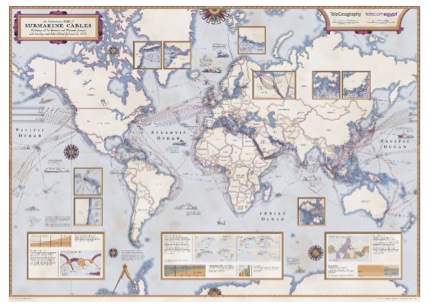
CABL® (cabl.com) serves
the business needs of the Broadband industry (including traditional
cable TV, fiber, telecom and satellite providers) with employment
listings, classified ads, discussion forums, and more. A contractor told us it's where they find lots of opportunities for subcontracting.
Do You Believe In Magic? Sufficiently advanced technology is indistinguishable from magic. ISE Magazine.
The Secret to Future Proofing, ISE Magazine
The 45 Year Old Overnight Sensation - ISE Magazine (Read the complete Nov/Dec issue of ISE Magazine here.
ESRI has created an ebook on GIS location technology for telecom. Use the link to download the book.
Conocimiento Esencial: ¿Por qué la fibra óptica? creado por FiberWizards
Recruiting And Training Today's Fiber Optic Workforce - Learn the fundamentals to recruit and train new fiber optics -ISE Magazine.
Google Video On Their Undersea Cables YouTube Slick but interesting video on how undersea cables are designed, built and used.
Construction Without Disruption - ISE Magazine
Fiber Optics Installed By The Lowest Bidder - ISE Magazine
Building Broadband During Component and Worker Shortages
- Broadband Communities - Completing broadband builds requires
competent fiber optic techs, but training them requires understanding
how they learn.
Worth Reading - Magazines, Websites and Newsletters
CABL® (cabl.com) serves
the business needs of the Broadband industry (including traditional
cable TV, fiber, telecom and satellite providers) with employment
listings, classified ads, discussion forums, and more. A contractor told us it's where they find lots of opportunities for subcontracting.
The Institute for Local
Self-Reliance weekly newsletter has
lots of interesting articles and links.
Next Century Cities Newsletter
- News from cities around the US
including Detroit and New York plus small
Structured Cabling News
- a website and weekly newsletter about cabling.
New Fiber Optic
Magazine In Spanish
We do not know about the fate of Todo Fibra Optica following the passing of Jose.
Todo Fibra Optica is
a new digital magazine in Spanish for fiber optics
in Latin America and South America. Jose Enriquez, editor of Todo
Fibra Optic magazine has many years
experience in the fiber optic industry so he knows
the industry well. FOA will be working with him to
share our extensive technical materials in Spanish.
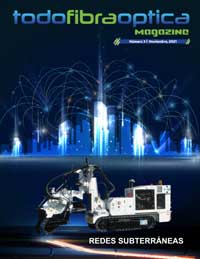 Read their newsletter here. It is now available online in English and Spanish.
Read their newsletter here. It is now available online in English and Spanish.
All issues and subscriptions.
Contact:
José Manuel Enriquez Mora, Editor
Todo Fibra Optica LLC
https://todofibraoptica.com/revista-ediciones/
+52 222 302 8224
jose.enriquez@todofibraoptica.com
RTI Telecom Magazine from Brazil, in Portuguese. A revista RTI do mês de abril já está disponível online e recomendo a leitura de alguns artigos:
FOA was founded in 1995 - FOA's History
As
part of celebrating 25 years of serving the fiber
optic industry in 2020 as its primary source of technical
information and independent certifying body, FOA
thought it appropriate to create a short history of
the organization and how it has developed to
help the fiber optic industry. We also wanted to
recognize the contributions many people have made to
the organization over the years that made FOA what
it is today.
The FOA history is now archived on the FOA
website where you can read it anytime or link to
it. Updated
info - dB, total internal reflection and science
projects,
Worth Reading - History & Technical
1983
Video of AT&T's First Test Of A Submarine
Cable System From the AT&T Tech
Channel archives (worth exploring!)
Richard
Epworth's Optical Fiber History from his work
at STL from 1966 with Charles Kao.
50th Anniversary of The
Development of Low Loss Fibers A history
of the development of low loss fiber, a fascinating
story by Jeff Hecht on the OSA (Optical Society of
America) website.
The First Transcontinental Telephone Line
began operation on July 29th in 1915 - 3400 miles between New
York and San Francisco - required over 100,000 telephone poles! Wonders
of World Engineering
"Who Lost Lucent?: The
Decline of America's Telecom Equipment Industry"
This is a MUST READ for managers in telecom or any
industry!
Communications Systems Grounding
Rules: Article 800 provides specific
requirements by
Michael
Johnston, NECA Executive Director of
Standards and Safety in EC Magazine
US Broadband Coverage By Service
Provider from the FCC
How
To Build Rural Broadband, Learning From History
In the August 2021
FOA Newsletter, we published a lengthy article on
rural broadband and compared it to rural
electrification in America in the last century.
Much of the comparison was based on an article
written in 1940 by a USDA economist, Robert Beall,
called "Rural Electrification." If
you are interested in or involved in rural
broadband, we recommend you read the article "How
To Build Rural Broadband, Learning From History"
in the August 2021 FOA Newsletter and
read the Beall article also.
Recycling Fiber Optic
Cable - Contact:
Steve Maginnis
LD4Recycle/ CommuniCom Recycling
(Visit
website)
sm@LD4Recycle.com
803.371.5436
Sumitomo's Ribbon
Splicing Guide - download from
one of the leaders in splicing.
OFS also has an excellent
website and blog of tech articles worth browsing.
IEC 60050 - International
Electrotechnical Vocabulary - An
extensive dictionary for fiber optics in English and
French. Highly technical - this is one definition:
"mode - one solution of Maxwell's equations,
representing an electromagnetic field in a certain
space domain and belonging to a family of
independent solutions defined by specified boundary
conditions"
Restoration: If you are interested in restoration -
aren't we all? - you should also read this
article in dpPro magazine by FOA President Jim
Hayes: Damage Protection Requires
Looking Overhead As Well As Underground
- dpPRO Magazine - about the problems with
aerial cables. His previous article for the
magazine was New Techniques for Fiber
Optic Installation.
Universal access to broadband
is a cornerstone to a strong economy,
Achieving universal access will require
community partnerships. by Alfreda
B. Norman, Sr. VP, Federal Reserve Bank of
Dallas
FIBER TO THE FARM: The
co-ops that electrified Depression-era farms are
now building rural internet. Be sure to check out
the high-tech equine installation equipment.
Infrastructure Get Some
Respect, NY TImes "On Tech"
"The magic of the internet requires a lot of
very boring stuff behind the scenes. "
DIRT
Report On Damage To Utilities Common Ground
Alliance (CGA) annual DIRT report provides a
summary and analysis of the events submitted into
CGA’s Damage Information Reporting Tool (DIRT) for
the year 2018. The complete report is available
for download here. In addition,
there is an interactive dashboard that
allows users to filter the data more by
factors contributing to damages.
Fiber Trivia From
Corning.
VIAVI Books On
Fiber Optic Testing (2 volumes) - They're back!
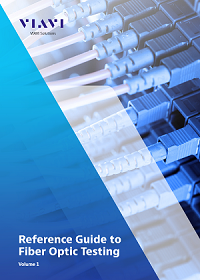 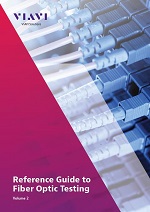
Besides
the FOA reference materials, two JDSU/VIAVI
textbooks, Reference Guide to Fiber Optic Testing,
Volumes 1 and 2, were used as references for
some of the FOA courses and are recommended for
instructors and students. The books are available
from VIAVI as eBooks and the everyone should
download them and recommend them to others.Download
yours now. Volume 1. Volume 2. Viavi Books
Ciena's Submarine Cable
Handbooks (4 to download)
How OFS Makes Fiber
Interesting YouTube video on how fiber is made.
Perhaps a little too much "show biz" but
fascinating. If you have ever seen fiber
manufacture, look at this video. You will be amazed
at how big preforms have become!
The True Cost of Telco Damages
(what backhoe fade or target practice can
cost)
Rural Electric Cooperatives:
Pole Attachment Policies and Issues, June 2019.
|
Q&A
When readers ask us questions, we genrally refer them to FOA
resources where they can find the answer to their question and many
more. We first send them to the FOA Guide
which is the table of contents for the FOA technical resources. There
they can find pages indexed by topic and a search engine for the FOA
website. It also links them to FOA videos and courses on our free online learning site Fiber U.
The FOA
Fiber FAQs Page (FAQs = frequently asked
questions) gathers up questions readers have
asked us (which first ran in this newsletter)
and adds tech topics of general interest.
|
Good Question!
Tech
Questions/Comments From FOA Newsletter Readers
Color Code Guides
Q: Is it possible for you to please send me a fiber optic color code bundle pocket size?
A: FOA has color code guides you can print yourself or download to your smartphone or tablet.
See https://foa.org/tech/ColCodes.htm
What's included in a government grant?
Q: When a companyb is awarded a 'government grant' to
install fiber in a given area, does the 'grant' money also include the
splicing, testing, etc; is it dark or lit?How about providing the
transmission of actual broadband services to a home or business?
A: What is included in grants depends on the project
submission. A "middle mile" project could include the fiber optic cable
plant with drops for users to connect to dark fibers or be a complete
communication system with carrier Ethernet service points to users to
connect. In either case, it includes all the construction, cable plant
installation and testing.
A communications system proposal could also include connecting users if
the originator of the proposal knew the number of users to be connected
-each one of which adds costs. Same for a FTTH network. It could just be
the cable plant, a functioning PON system with drops available to all
users passed or include connecting users. One could do an educated guess
on the percentage of homes passed that would connect, or include a user
paid connection fee to cover the costs.
It depends on the proposal that was submitted and approved.
How to handle results from OTDR measurements
Q: The discussion evolves around how to handle results from OTDR measurements.
The cable manufacturer wants to average the results of a splice event
from a set of bi-directional OTDR measurements. Essentially, the
cable manufacturer wants to average the loss measurements from the
bi-directional measurements. In specific, we have an event (that
we think is a splice) that has a loss in one direction and a reflection
in the other direction
A: The issue of bidirectional OTDR measurements is covered in the FOA Guide: https://foa.org/tech/ref/testing/OTDR/OTDR.html
Wavelengths
Q: What is different between 1310 nm and 1550nm
A: Those are the two wavelengths used with singlemode fiber.
They are used because they were two wavelengths that the fiber would be
singlemode (>1270nm) and wavelengths that it was easy to make solid
state lasers 40 years ago when they were introduced. Longer
wavelengths like 1550nm have lower loss in the fibers so the
fibers for very long distance links are optimized for 1550nm
Mating Mismatched Connectors
Q: I have a question during OTDR Testing... The interface
port of the OTDR is SC-APC so i have also a launch cable with SC-APC
connectors, end to end. the fiber cable plant that i need to test has a
patch panel connector of LC-UPC.. can i use a hybrid adapter to connect
my launch cable to the patch panel? if this is allowed, what will be the
formula for calculating the connector loss.. note: the adapter has an
insertion loss of <0.3dB
A: You need to use a hybrid adapter cable with a LC/UPC
connector on one end to connect to the cable plant under test and a
connector to connect to your usual launch cable - and that cable needs
to be longer than the dead zone of the OTDR so the connection to the
cable plant can be separated and not affected by the connection on the
other end to your normal launch cable. Alternatively, you can have a
hybrid launch cable with SC/APC on the OTDR end and LC/UPC on the cable
plant end.
You cannot use a hybrid mating adapter. The angled SC/APC connector
cannot be mated to a UPC connector. Anyway th ehybrid SCLC mating
adapters are not a good idea becasue of the difference in the diameter
of the ferrules.
OLTS or OTDR?
Q: A client is requesting a certification according to ISO/IEC
11801, ISO/IEC 14763-3, TIA- 526.7-A, TIA-568.3-D, ANSI/TIA 568 C.3 or
later. I own a single-mode OTDR and a power meter with a Microscope. If I take
measurements with all three units and calculate the maximum allowable
drop according to length and given connectors or splicing to give
results on a pass or fail will be adequate or we have to measure with an
OLTS?
A: There is a task force in TIA TR42.11 trying to rationalize these
standards. Today most standards require testing with a light source and
power meter (LSPM) or optical loss test set (OLTS) which are the same
thing as the accepted method for testing an installed cable plant.
Several international standards now allow OTDR testing for acceptance,
but not in any TIA or US standards. So one should assume OTDR tests are
not acceptable, only OLTS testing.
FTTH Network Loss
Q: What are the causes of high loss in FTTH
A: The loss can be connections, including dirty connections, bad
splices, damaged cables, even a bad splitter. Have you tested with a
high resolution OTDR?
GIS Programs
Q: Have you done any reviews on OSP fiber route-structure mapping
systems and the associated GIS, or do you have opinions on the best
ones/combinations (Esri, 3GIS, Bentley, Graphical Networks, Vetro,
etc.)? Or can you point me somewhere to go read, search doesn't come up
with a lot of details.
A: Among the most established ones here in US are ArcGIS, IQGeo,
3-GIS, Vetro and OZmap. All seem to have proponents but we do not have
much practical experience except one of the FOA Tech Advisors uses OZ
map.
Older Questions:
Fiber Loss Budget
Q: For a fibre of total distance of 160km, what should be the standard total loss per kilometre?
A: The typical loss for SM fiber is ~0.35-0.4 dB/km at 1310 nm or
~0.15-0.2 dB/km at 1550. We assume a system like this will be using
1550 nm. You can use the FOA online Loss budget Calculator
https://foa.org/tech/ref/Loss_Budget/Loss_Budget.htm to estimate the
total link loss
Reuse Of Cable Being Removed From Service
Q: Is there ever a feasible reuse for used/older fiber optic cable?
Would some one be in the market for the FOC that is removed from
service? Lets say 20year old aerial cable ADSS?
A: We have been asked that question a lot. It often involves cheap
fiber on eBay or from surplus dealers. With the advances in fiber
technology and manufacturing, 20 or even 10-year old fiber is
essentially obsolete. Lots of service providers are replacing that fiber
with today’s higher performance fibers because networks are going from
the ~2 gigabit speeds then to terabit speeds today. We would never
recommend reusing fiber removed from service. You have no knowledge of
how it was installed originally and environmental conditions can be hard
on some types of cables. Besides, the cost of the cable is only 5-15%
of the project cost. Most of the cost is in the labor of installation so
the savings would be minimal and the risk high.
We have been telling people who have leftover cable from projects to
offer it to FOA schools. They are always in need of OSP cables.
Minimizing Latency
Q: Latency a term that is widely used today. If we manage to
make the light travel without interruption we will achieve that the
speed is perfect, but the equipment (router, OLT, firewall, etc)
generates a processing that takes some time, do you think that LATENCY 0
will be achieved?
A: The work on achieving minimal latency has been gong on for
decades, primarily driven by the computerized stock traders who rely on
microsecond trading. One recent project used an experimental fiber with a
hollow core becasue light travels 50% faster in the air than glass.
Most low latency networks try to use the longest fiber links possible
using submarine cable technology because the electronic switching takes
too much time. But most electronics require digital signal processing in
the transceivers which takes time, switches to the trading computers
takes time and while you can minimize it all, it can never reach “0”.
Microtrenching
Q: What is microtrenching?
A: Microtrenching is a technique for installing underground
fiber. It is done by sawing a groove in the road or sidewalk and
dropping a small (~1/2 inch or 13mm) plastic tube (duct) into the
groove and filling it up with material like the surface so it almost
disappears. The cable is “blown” into the duct with high pressure air -
actually the air floats the cable in the duct to reduce friction and the
cable is pushed into the duct.
Here are photos of a microtrenching installation in Toronto. Here is the explanation of microtrenching in the FOA Guide section on OSP Construction (about 3/4 down the page.)
We don’t think any of our schools teach this in the US but Triple Play does in South Africa.
In the US we recommend going to one of the companies that makes the construction equipment, primarily Ditch Witch.
Degraded Underground Fiber Optic Cable
Q: How can you handle a degraded buried
underground fiber link, which has degraded due to multiple joints
introduced during maintenance?
A: If it has reached a point where the loss or dispersion limits its use, it probably should be replaced.
Maintaining Fusion Splicers
Q: What are the best practices for the preventative maintenance of splicers, cleavers, and thermal strippers.
A: Because of the large number of manufacturers and variety of
models and applications, The FOA generally tells people to follow the
manufacturer’s directions for use and be especially careful about
keeping the splicer unit, cleaver and stripping tools clean, then having
it serviced regularly by the manufacturer or an authorized service
facility.
Rural FTTH
Q: What does A Rural FTTH Connection Cost?
A: That's a very complicated question, because "rural" has a lot
of meanings. Is it a small town where building a FTTH Network is easy or
remote users in Alaska? An interesting set of data was made available
this month from the US Department of Agriculture, announcing $700
million in grants and loans in the 4th round of the ReConnect Program https://lnkd.in/gFe9T4b7.
Splicing Dissimilar FIbers
Q: Recently I came across a new problem while splicing optical fiber
cable. Splicing of 2 Fujikura fibers was done but loss was
observed. Initially, we felt that it is due to splicing but upon
resplicing the loss was still the same i.e. 0.3db at the splice point.
Both the cables were checked again and observed that both cables were
from different manufacturers. My question is that if different
manufacturer's cables are spliced, will it give loss? Note: Both fibers
were Fujikura but had different IOR.
A: The difference in IOR tells the reason. The loss at the joint
between the two fibers when measured by an OTDR depends on the optical
characteristics of the fibers. A difference in the fibers IOR and
backscatter coefficient will cause the loss measurement to be affected.
In one direction it measures too high, in the other direction too low or
even shows a gain. That’s why some measwurements are called gainers. If
you measure it in the opposite direction you should see low loss or a
gain. It’s explained here in the OTDR page on the FOA Guide https://foa.org/tech/ref/testing/OTDR/OTDR.html in the section “OTDR Measurement Uncertainty.”
Testing FTTH Networks
Q: I work on FTTH projects that utilize 1x32 and 1x64 splitters that
do not have any active light on the fibers. Is there a mobile source
that can be used in the field to simulate active light through splitters
and still provide enough power to travel 20km?
A: Any 1310/1490/1550 test source should have adequate power to
test them with a regular power meter. A 64 port splitter has only
18dB+any excess loss- so 20dB or so - and any power meter can measure
that with a ~0dBm to -6dBm source.
More on testing FTTH Networks
OTDR Dead Zone
Q: What is dead zone when using OTDR?
A: The "dead zone" is the length of fiber near the OTDR that is
blanked out by the overload from the test pules. See this page on OTDRs
in the FOA Online Guide: https://foa.org/tech/ref/testing/OTDR/OTDR.html
Using A Visual fault lOcator
Q: What are the best practices for using a VFL to locate fiber faults?
A: See https://foa.org/tech/ref/testing/test/visual.html in the FOA Online Guide
Fiber Splicing Cost
Q: What is the standard of costing for fiber splicing and
terminations? Is it per core / per splice or per each cable end
irrespective of the number of cores?
A: That is a very hard question to answer, other than to say ”it
depends. ” The number of fibers is definitely a factor because each
fiber must be stripped, cleaned, cleaved and spliced then placed in the
splice tray.
It also depends on:
- Single fiber or ribbon splicing?
- Type of splice closure
- Type of cable (loose tube, ribbon, flexible ribbon, high density, armored, ADSS, etc.)
- Installation: aerial or underground
- Location: urban or rural
- Set up time (same for low fiber count cable as high fiber count cable)
Most contracts will be considering the number of
fibers but also these factors, and probably they want to price by the
number of fibers, but the price per splice will vary accordingly. We've
seen quotes in the US for prices varying over a 10X range.
Markers Required For Underground Fiber Optic Cables?
Q: Are signs required for underground cables like fiber
optic cables? Are they required to have signage so people don’t dig them
up or damage them?
A: In the US the answer is NO. There is no Federal or State law
which requires marking anything other than hazardous liquids and gases.
It is purely a business decision or a moral decision to invest in
signs/markers to protect buried fiber. If a fiber gets cut it can
disrupt 911 service and all kinds of vital communication related to
hospitals, air traffic control, etc.
Fiber Optic Color Codes Reference Chart
Q: Has anyone made a fiber optic pocket reference chart that has cable
color orders, frequencies, or other commonly used info on it?
A: The FOA has a page on its Online Guide that covers color codes
(https://foa.org/tech/ColCodes.htm). It is the most popular page in the
FOA Guide! It works great with a smartphone.

The
word on the "Dig Once" program is getting out - FOA
is getting calls from cities asking us for
information and advice. Here are some links:
The DoT page on the administration’s Executive
Order: http://www.fhwa.dot.gov/policy/otps/exeorder.cfm
And the
one to download and hand out:
A “How To” Guide from The Global Connect Initiative:
https://share.america.gov/wp-content/uploads/2016/04/6.-GCI-Dig-Once.pdf
|
Training / FiberU
News and resources to help you learn more and stay
updated.
Learn about the fiber optic/ broadband workforce
Find a
listing of all the FOA-Approved schools here.

Free online
self-study programs on many fiber optics and
cabling topics are available at Fiber U, FOA's
online web-based training website.
Free online training at
Fiber U
The FOA has >100
videos on  |
The Types of Work Done By Fiber Techs And How It Affects Training

What is a fiber optic technician? What kinds of work
do they do? Those topics were the center of FOA discussions with the US
Department of Labor Bureau of Labor Statistics that led to the new job
category of "Telecommunications Technician" on the BLS
website. The focus of this job category is primarily the
installation and operation of the fiber optic cable plant, but one
should not forget the cable plant must be designed also as part of a
more extensive communications network.
In our discussion with the BLS analysts, we pointed out the various
stages of a fiber optic communications network project and how techs
with various knowledge and skill sets are needed and involved in every
step. Here is how FOA defines these stages of a project and the skills
of the techs. This is not unique to FOA; it's what has been traditional
at telecom companies forever.
Planning and Design: Once needs for a communications network is
established, project managers will be responsible for all the details of
the project while experienced fiber techs trained and experienced in
fiber optic network design (CFOS/D) will design the cable plant itself. (FOA Guide - Design)
Construction: Aerial cable plants may require installing new poles or
doing make-ready on existing poles and messengers. Underground
construction requires trenching and installation of ducts. In many cases
the actual construction is done by general construction workers, as the
construction work in many cases is not unique to fiber optics. Heavy
machinery is required for much of the construction work and training is
focused on safety as well as operating the machinery. (FOA Guide - Construction)
Fiber Optic Cable Installers: Once the route is prepared, the fiber
optic cable can be installed. Aerial cable installation depends on the
type of cable. Regular OSP cable, figure 8 cable and ADSS cable requires
special hardware and installation techniques so the techs must
understand the process appropriate for each cable. (FOA Guide - Installation)
Splicers: Since the beginning, fiber techs have been called
"splicers"
because that was the original job unique to fiber optics. Construction
and cable installation was not very different from earlier copper
cables, but splicing was very different. Even today, fiber techs are
often called splicers and splicing is a core skill for any fiber tech
whether they are joining cables or terminating them. (FOA Guide - Splicing)
Testers: After the fiber optic cable is installed and spliced,
it must be tested. Testing goes together with splicing since every
splice will be tested, often as soon as it is made so if it needs
redoing, it should be done before the splice closure is sealed. (FOA Guide - Testing)
Network Operators: Once the cable plant is built and the communications
equipment installed, it needs techs who know how to operate the comms
but may only know how to connect new gear or change connections on
current gear. These techs should also know how to troubleshoot systems
in an outage and either do the restoration themselves or call a tech who
can. (FOA Guide - Operation)
These categories merely define the stages of installation of a fiber
optic project. Of course there are subsets of these categories and most
fiber techs are expected to have skills and jobs that cross into
multiple groups, as FOA has defined in the KSAs (knowledge, skills and abilities) for a CFOT.
What an individual worker does differs according to their job. An
independent fiber contractor may cover every job except
operation and a FTTH subscriber installation tech may only understand
installing cables, testing and connecting equipment within the scope of
FTTH systems. A construction company may handle the trenching and even
pole setting as well as parts of the traditional fiber work.
The FOA defined its role early on to focus on educating and
certifying techs in the fiber specific skills: cable installation,
splicing, testing and restoration. FOA would like to see more schools
get into the construction phase, especially for newer techniques like
microtrenching and blowing cable, but these require large outdoor areas
for training and large investments in equipment. Most techs who learn
these processes now do it with OJT - on-the-job-training - and hopefully get OSHA
training for safety.
New In Spanish - Nuevo en español
FOA Spanish Textbook And Online Guide Updated
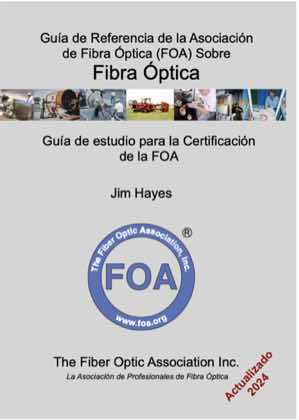
The FOA Spanish textbook and Online Guide on basic fiber optics has just
been updated. The new version includes all the latest updates and is
intended for use with FOA CFOT certification classes presented in
Spanish. Both paperback and Kindle versions are available. The textbook and the updated CFOT class
curriculum are available now.
Libro de texto en español y guía en línea de FOA actualizados
Se acaba de actualizar el libro de texto en español y la Guía Online de FOA
sobre fibra óptica básica. La nueva versión incluye las últimas
actualizaciones y está diseñada para usarse con las clases de
certificación FOA CFOT presentadas en español. Están disponibles
versiones de bolsillo y Kindle. El libro de texto y el plan de estudios
actualizado de la clase CFOT ya están disponibles.
FOA Adds Fiber Optic Network Design in Spanish
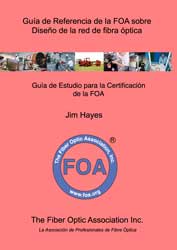
The FOA Design textbook and course curriculum are available in Spanish also. The FOA CFOS/D curriculum in Spanish includes the necessary materials
for an instructor to present the course in Spanish and give thCFOS/D
certification exam in Spanish. The material is available to any
FOA-approved school. For more infirmation on becoming a FOA approved
school, go here.
El libro de texto de FOA Design y el plan de estudios
del curso también están disponibles en español. El plan de estudios de
FOA CFOS/D en español incluye los materiales necesarios para que un
instructor presente el curso en español y dé el examen de certificación
CFOS/D en español. El material está disponible para cualquier escuela
aprobada por la FOA. Para obtener más confirmación sobre cómo
convertirse en una escuela aprobada por la FOA, vaya aquí.
FOA School News
FOA's roster of approved schools is growing as more organizations
recognize our expertise in workforce development and our comprehensive
support for getting new schools started. FOA has over 25 years
experience and nearly 100,000 certified fiber techs (with ~130,000
certifications). As a non-profit organization founded by the industry
specifically to develop a competent workforce, FOA provides the
consultation, curriculum and contacts to get schools started as a free
service to new schools.
Complete listing of FOA Approved Training Organizations
Need A Fiber Optic Course Onsite? Invite an FOA School To Come To You
FOA often gets inquiries from an organization that
has personnel that needs training in fiber optics. Recent inquiries have
included contractors, a manufacturer of high-reliability products using
fiber optics and a cable manufacturer. In many cases, where there are
several people needing training, FOA can recommend a FOA Approved School
and Certified Instructor who will come to their location to teach a
class. The advantage is of course the savings in travel costs if
the class comes to you, but it also offers the opportunity to customize
the course to fit your needs, even use your equipment or work on your
components, so the training is more relevant to those taking the class.
Contact FOA to discuss the idea of a custom, on-site class to see if it will better meet your needs.
Fiber U
On-The-Job Training (OJT) Program
The
FOA Fiber U OJT program for novices combines online study at
Fiber U with OJT with mentoring by experienced
co-workers and their supervisor to help new employees
develop into experienced FOA-certified technicians.
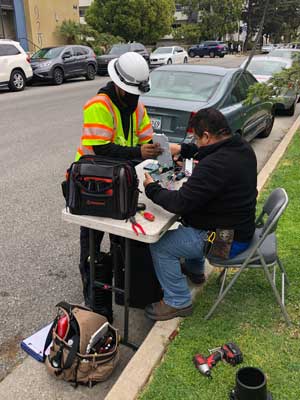
The FOA Fiber U “OJT-To-Cert”
program includes both fiber optics
and premises cabling (copper, fiber & wireless),
so it covers techs working in both outside plant and
premises jobs.
Like other FOA
programs, the OJT-To-Cert program is free. If you
and/or your company is interested in the FOA
OJT-To-Cert program,
contact FOA.
To explain how OJT
works and FOA's OJT-To-Cert program, FOA created a
short video: Lecture 62: On
The Job Training For Fiber Optics Using Fiber
U
FOA
Direct Certification Program For Experienced Fiber Optic Techs
Experience Plus
Online Study At Fiber U = FOA Certification
Experienced fiber optic technicians can become FOA Certified using
their experience in fiber optics and study for the
FOA certification exams online at Fiber U. Thousands of
industry professionals have applied to the FOA
directly for certification without the need for
classroom training, based on their knowledge and
skills developed working the field. Since FOA
certifications are based on KSAs (knowledge, skills
and abilities), current techs can show the
skills and abilities required through their field
experience. FOA provides free online self-study courses at Fiber U for the knowledge
part to prepare you for FOA certification exams
which you can also take online.
If you are an experienced field tech interested in
certification, and FOA is the internationally
recognized certifying body for fiber optics, you can
find out more about the FOA Direct Certification Program
here.
If you are already a CFOT, FOA also offers many
specialist certifications you can obtain based on
your experience as a field tech. See what's
available at Fiber
U.

Fiber U "Basic Fiber
Optics" Online Self-Study Course Now In Spanish
El curso de
autoaprendizaje en línea "Fibra óptica básica" de
Fiber U ahora en español
El sitio de
aprendizaje en línea de FOA, Fiber U, tiene más de
dos docenas de cursos de autoaprendizaje gratuitos
sobre fibra óptica y cableado de instalaciones.
Como era de esperar, el tema más popular es el
curso "Fibra óptica básica", que se utiliza para
iniciarse en la fibra óptica y como curso de
preparación para realizar el examen de
certificación FOA CFOT.
Ahora el curso básico
de fibra óptica está disponible en español,
utilizando el libro de texto FOA en español, la
sección de la Guía en línea en español y la
capacidad de YouTube para traducir subtítulos de
video al español. El curso funciona exactamente
como la versión en inglés con 10 lecciones, cada
una con cuestionarios y una opción para tomar un
examen de Certificado de finalización.
Para presentar el nuevo curso de
español Fiber U, el examen Certificate of
Completion es gratuito, así que dígaselo a sus
contactos.
Curso Básico de Fibra Óptica
de Fibra U en español.
New Fiber U Course: Fiber Characterization
FOA has added a new course at Fiber U on Fiber Characterization. Fiber
characterization is the process for testing long fiber cable plants for
its ability for carrying high speed communications. With so many
networks now operating at 100, 200, 400 or even 800 Gb/s, fiber
characterization is important, especially on older fiber optic cable
plants.The free Fiber U Fiber Characterization course is available in two forms, as a standalone Fiber U fiber Characterization Course with its own Fiber U Certificate of Completion and as a separate Lesson in the Fiber U Fiber Optic Testing course. This course is recommended for those studying for the FOA CFOS/FC Fiber Characterization certification.
Fiber U MiniCourses: Got An Hour Or Less?
Learn Something New About Fiber Optics.
FOA
has introduced a new type of Fiber U
course, the MiniCourse, a free online course you
could take in a short time, perhaps as you ate lunch
at your desk or took a coffee break. The
topics of these courses should explain what they are
about, and these are all very important topics to
fiber optic techs.
New Fiber U MiniCourse - Fiber Optic Jargon
There is a new MiniCourse at Fiber U - Fiber Optic Jargon.
Jargon is the most important thing you need to learn when you learn
about a new technology. This short Fiber U MiniCourse is intended to
introduce you to fiber optic jargon and make learning about fiber much
easier. It's aimed at novices but is a good refresher for even
experienced techs.
Fiber Optics In Communications
Fiber Optic Jargon
How Optical Fiber Works
Fiber Optic Network
Restoration
Fiber
Optic Connector Identification
Fiber U Color Codes
The Mysterious
dB of Fiber Optics
Fiber Optic Cable Bend Radius
Fiber Optic Link Loss And Power
Budgets
Fiber Optic Connector
Inspection And Cleaning
Fiber Optic Media Conversion
Fiber Optic Cable Midspan Access
Reading An OTDR Trace
Reference Cables For Testing
Fiber Optic Attenuators
The courses have two components, video lectures and
readings, that are complementary. As usual there is
a self-test to allow you to check your
comprehension. As with other Fiber U courses if you
desire, you can take a short test for a Fiber U
Certificate of Completion that costs
only $10.
All these free courses and many more
are available at Fiber U.
What Fiber Techs
Don't Know -
What We Learn From
FOA Certification Tests
As
FOA moves more testing over to our digital online
testing system at ClassMarker, we have access to
more data about our testing, including what
questions and topics on the tests are answered
incorrectly most often. Having this data gives us an
opportunity to evaluate the questions and how they
are stated, but more importantly it allow us to help
our instructors teach the subjects and us to change
our curriculum and online courses to emphasize these
particular topics. These are some of the topics that
we have noticed are answered incorrectly more often
in FOA and Fiber U tests.
Most of the questions missed are on testing.
1. OTDRs - particularly what information is in the
OTDR trace.
2. The difference between dB and dBm
3. Loss budgets - both the concepts and doing the
math
4. Insertion loss testing - single-ended or double
ended for testing patchcords or cable plants, how to
set 0dB references
5. Units of measure - fiber is measured in microns,
wavelengths in nanometers, etc.
At FOA, we're working to add Fiber
U MiniCourses on these topics and working with
our schools to emphasize these topics in their
classes.
If you are going to be taking a FOA certification
course or test in the near future, these topics
should be on your final exam study list.
What We Learn From Hands On Labs
We learn about students performance in hands-on labs
from the feedback of our instructors and our own
experiences too. One big problem is the use of hand
tools. Growing up today, you learn how to use
keyboards, mouses and touch screens, but decades
ago, you also learned how to use basic hand tools.
This is big enough of a problem that we're
considering adding some video lessons on basic hand
tools to prepare students for cable prep,
termination and splicing that require the use of
hand tools.

FOA offers free online self-study programs at Fiber U.
Many users are preparing for FOA certification
programs - taking courses at our schools or using
the Direct Certification program. Some of our
schools are requiring Fiber U programs as
prerequisites for their classroom courses so they
can spend more time on hands-on activities.
|
Publications /
Resources

|
Cross Reference To FOA Tech Materials
FOA has so much technical reference material, we created a cross reference guide to the textbooks,
Online Guide and Fiber U courses, all the FOA technical information.
Besides the textbooks, online Guide and Fiber U, each section of the
Guide also includes links to the 100+ FOA videos available.
Cross Reference Guide to Textbooks, Online Guide and Fiber U
FOA Guide To Fiber Optic Workforce Development
To help those new to fiber optic workforce development, FOA has created a web page we call "Fiber Optic Workforce Development."
In this page, we share what we have learned about the fiber optic
workforce, who they are and how they learn their trade. We discuss what
defines a fiber optic tech and how they should be certified.
Read the FOA Guide To Fiber Optic Workforce Development online.
Latest FOA Book: Fiber Broadband (Paperback and Kindle)
 In less than half a century,
fiber optics has revolutionized communications and to a large extent,
society in general. Broadband, what many today call high speed Internet
access, has become a necessity for everyone, not a luxury. The
technology that makes broadband possible is fiber optics, connecting the
continents, cities, and just about everybody. Even fiber to the home
(FTTH) brings broadband to hundreds of millions worldwide. In less than half a century,
fiber optics has revolutionized communications and to a large extent,
society in general. Broadband, what many today call high speed Internet
access, has become a necessity for everyone, not a luxury. The
technology that makes broadband possible is fiber optics, connecting the
continents, cities, and just about everybody. Even fiber to the home
(FTTH) brings broadband to hundreds of millions worldwide.
How did we get from an era when communications was making a telephone
call or sending a telegram to today’s world where every piece of
information – and misinformation – is available at the click of a mouse
or touch on a screen? How did we get from a time when a phone was
connected on copper wires to being able to connect practically anywhere
on a handheld device with more computing power than was available to
scientists and engineers only decades ago?
How does broadband work? Without fiber optics it would not work.
This book is not the typical FOA technical textbook - it is written for
anyone who wants to understand fiber broadband or fiber optics or the
Internet. It's also aimed at STEM teachers who want to include
communications technology in their classes. This book will try to
explain not only how fiber broadband works, but how
it was developed. It is intended to be an introduction to
communications technology
appropriate for a communications course at almost any level (junior
high, high school or
college,) for managers involved with broadband projects, or for anyone
who just wonders how all this stuff works.
The Fiber Optic Association Guide To Fiber Broadband
Paperback ($12.95) and Kindle ($9.95) versions available from Amazon or most booksellers. Kindle version is in color!
More Translations of FOA Textbooks
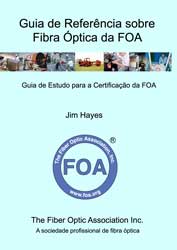 FOA is a very international organization and it works hard to
accommodate the language needs of everyone. We have been translating our
books and website into the languages most requested, and this month, we
add two more textbook translations. We also want to thank Jerry Morla,
FOA CFOS/I instructor and Director who has been doing the recent
translations into Spanish, his native language. FOA is a very international organization and it works hard to
accommodate the language needs of everyone. We have been translating our
books and website into the languages most requested, and this month, we
add two more textbook translations. We also want to thank Jerry Morla,
FOA CFOS/I instructor and Director who has been doing the recent
translations into Spanish, his native language.
Here is a listing of all the FOA textbook Translations
Spanish Editions:
Guía de Referencia de la Asociación de Fibra Óptica (FOA) Sobre Fibra
Óptica: Guía de estudio para la certificación de la FOA Amazon
La Referencia de Cableado para Predios de la FOA: Guía para Certificación de la FOA Amazon
La Asociación de Fibra Óptica Manual de Fibra Hasta el Hogar : Para
Planificadores, Gestores, Diseñadores, Instaladores y Operadores De
FTTH Amazon
Guía de Referencia de la FOA sobre Diseño de la red de fibra óptica: Guía de Estudio para la Certificación de la FOA Amazon
And the FOA Reference Guide To Fiber Optics:
French Edition: Le
Guide de référence de la FOA pour la fibre optique et et
guide d'étude pour la certification FOA: Guide d'étude pour
la certification FOA Amazon
Portuguese Edition: Guia de Referência sobre Fibra Óptica da FOA : Guia de Estudo para a Certificação da FOA Amazon
The subject matter of these books is also translated in the FOA Guide online.
Planning A Fiber Optic Project?
The FOA Guide To Fiber Optic Projects includes this timeline and comments on project planning and implementation.
FOA Video
Lectures On YouTube
Did
you know YouTube will close caption videos in many
languages?
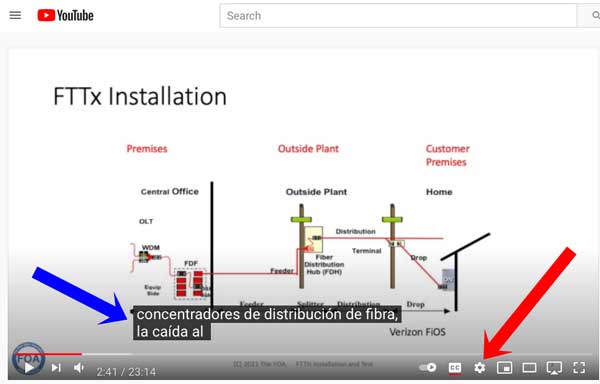
Sign in with Google to get translations for closed
captioning. Click on the settings icon (red arrow.)
Choose "Subtitles". English is the default
language. Click on the arrow after "English
(auto-generated) >". In the new window click on
"Auto-translate" and choose the language you
want.
FOA Loss Budget
Calculator On A Web Page 5/2020
FOA
has written many articles about loss budgets,
something everyone involved in fiber optics needs to
know and needs to know how to calculate. We recently
discovered how to get a spreadsheet ported to a Web
page, so we created this web page that calculates
loss budgets. We have an iOS loss budget app, but
with this web page, you can calculate loss budgets
from any device, smart phone, tablet, laptop, or
desktop computer that has web browsing capability.

Bookmark this page (especially on your
smartphone): FOA Loss Budget Calculator
Online
 We are continually updating the Online Reference
Guide to keep up with changes in the industry and
adding lots of new pages of technical information.
When you go to the FOA
Guide Table of Contents to see the latest
updates - look for
We are continually updating the Online Reference
Guide to keep up with changes in the industry and
adding lots of new pages of technical information.
When you go to the FOA
Guide Table of Contents to see the latest
updates - look for  . .
 
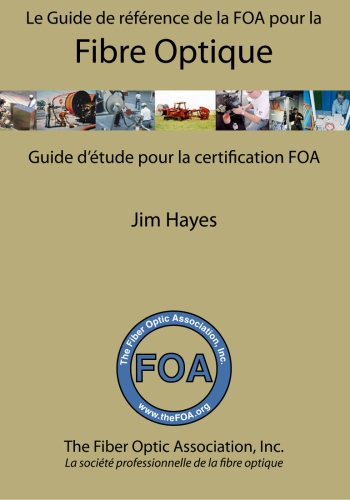  
   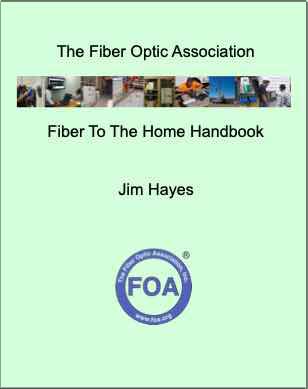

Fiber Optics (4 languages), Premises Cabling, OSP
fiber and construction, Network Design, Testing,
FTTH Handbook and our latest - FIber Broadband
The FOA has it's own
reference books for everyone working in fiber
optics - contractors, installers and end users as
well as for use as textbooks in classes at
educational institutions. They are available as
printed books or Kindle at much lower prices than
most textbooks since we self-publish and sell
online, cutting out the middlemen. Click on the
book images for more information. The Reference
Guide To Fiber Optics is also available in
Spanish, French and Portuguese. The Design book is available in English
and Spanish.
Click on any book for more information
about it.
FOA
has reprinted

"Lennie Lightwave's Guide"
on its 25th anniversary in a special print
edition.
Lennie
and Uncle Ted's
Guides are online.
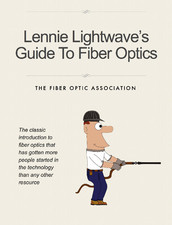
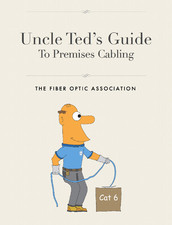
Click on any of
the books to learn more.
- Fiber
Optic Safety Poster to download and
print
Resources For
Teachers In K-12 And Technical Schools
Teachers in all grades can introduce their
students to fiber optic technology with some
simple demonstrations. FOA has created a page for
STEM or STEAM (science, technology, engineering, arts
and math) teachers with materials appropriate to
their classes. Fiber Optic Resources For
Teachers.
|
Safety
|
On Safety
The FOA is concerned about safety!
FOA
considers safety an integral part of all our
programs, curriculum materials and technical
materials. We start all our textbooks and their
online versions with a section on safety in the
first chapter, like this: Before
we get started - Safety First!
There are pages on the FOA Guide on Safety
procedures Including Eye Safety and. Digging
Safely
And a YouTube lecture: FOA Lecture 2: Safety When Working
With Fiber Optics
In our OSP Construction Section, these pages cover
many safety issues including those related to the
construction of the cable plant: Project Preparation And Guidelines,
Underground Cable Construction,
Underground Cable Installation
and Aerial Cable Installation.
There is even a safety poster for the fiber
activities: PDF Safety Rules For Fiber Optics
Other Safety Resources:
There is a toll-free
"call before you dig" number in the USA: Dial 811. See www.call811.com
for more information in the US. Here is their map of resources by states.
In Canada, it's "Click Before You Dig.com" They also have a page of resources by US states and Canadian provinces.
The Common Ground
Alliance has an excellent "Best Practices Guide"
online
- The US Department
of Transportation has a website called "National
Pipeline Mapping System" that allows one
to search for buried pipelines.
Why We Warn You To
Be Careful About Fiber Shards
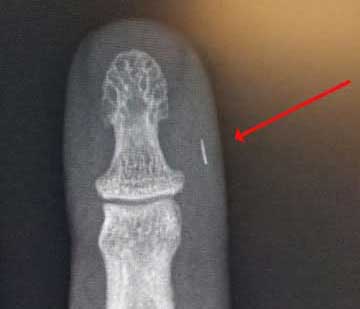
Photo courtesy Brian Brandstetter,
Mississauga Training Consultantcy
FOA
Corporate Program - Products & Services
Search
for products and services offered by hundreds of fiber optic companies worldwide.
List
of corporate information on the FOA website.
FOA Corporate Program is available to companies involved in fiber
optics as manufacturers, contractors, installers, etc. Read
more.
|
FOA/About
About The FOA
- Contact
Us: http://www.foa.org
or email <info@foa.org>

FOA has a company page
and four LinkedIn Groups
FOA
- official company page on LinkedIn
FOA
- covers FOA, technology and jobs in the fiber optic
marketplace
FOA
Fiber Optic Training - open to all, covers
fiber optic technology and training topics
Grupo de La Asociación de
Fibra Óptica FOA (Español)
|
What is The FOA?
The FOA is a, international non-profit
educational association chartered to promote
professionalism in fiber optics through education,
certification and standards.
Founded in 1995 by a dozen prominent fiber optics
trainers and leaders from education, industry and government as a professional society for fiber
optics and a source of independent certification,
the FOA has grown to now being involved in numerous
activities to educate the world about fiber optics
and certify the workers who design, build and
operate the world's fiber optic networks.
Read More
FOA History
FOA Timeline of Fiber Optics
Contact
Us
The Fiber Optic Association Inc.
https://www.foa.org or email
<info@foa.org>
https://www.thefoa.org or email <info@thefoa.org>
Telephone/text: 760-451-3655
The
FOA Home Page

Want to know more about fiber optics? Study
for FOA certifications? Free
Self-Study Programs are on "Fiber U®."
Looking for specific information? Here's the largest
technical reference on the web: The
FOA Online Fiber Optic Reference Guide.

Free online self-study programs
on many fiber optics and cabling topics are
available at Fiber U,
FOA's online web-based training website.
|
-
Contact Us
The Fiber Optic Association Inc.
The FOA Home Page
Fiber Optic Timeline
(C)1999-2023, The Fiber Optic Association, Inc.
|
FOA Logo
Merchandise
New FOA Swag! Shirts,
Caps, Stickers, Cups, etc.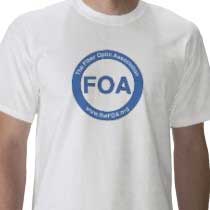
The
FOA has created a store on Zazzle.com offering lots
of new logo merchandise. It has lots of versions of
shirts and other merchandise with "FOA," "Fiber U,"
"Lennie Lightwave" designs and more so you should
find something just for you! See FOA on Zazzle.
-
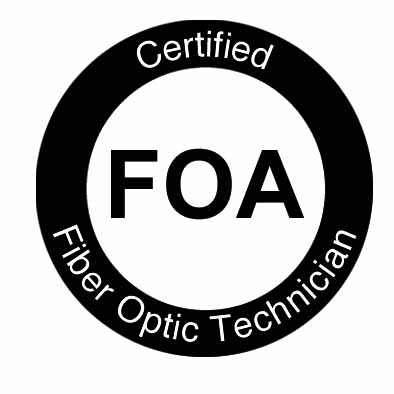
Your
Name, CFOT® - It pays to advertise!
The FOA encourages
CFOTs to use the logo on their business cards,
letterhead, truck or van, etc. and provides logo
files for that purpose. But we are also asked
about how to use the CFOT or CFOS certifications.
Easy, you can refer to yourself as "Your Name,
CFOT" or "Your Name, CFOS/T" for example.
Feel free to use the
logo and designations to promote your achievements
and professionalism!
Contact
FOA at info@thefoa.org to get logos in file format
for your use.
Privacy Policy (for
the EU GDPR): The FOA does not
use cookies or any other web tricks to gather
information on visitors to our website, nor do
we allow commercial advertising. Our website
hosts may gather traffic statistics for the
visitors to our website and our online testing
service, ClassMarker, maintains statistics of
test results. We do not release or misuse any
information on any of our members except we will
confirm FOA certifications and Fiber U
certificates of completion when requested by
appropriate persons such as employers or
personnel services.
Read
the complete FOA Privacy Policy here.
|










































 OptConn
is a value-add re-seller of optical connectivity products, services and
solutions. With over 30 years of experience in the fiber optics
industry we are here to serve your requirements from fiber optic
training with FOA certification to products, materials and supplies.
OptConn
is a value-add re-seller of optical connectivity products, services and
solutions. With over 30 years of experience in the fiber optics
industry we are here to serve your requirements from fiber optic
training with FOA certification to products, materials and supplies. 


 You might remember an article in the FOA Newsletter in
You might remember an article in the FOA Newsletter in 
















 .
.






